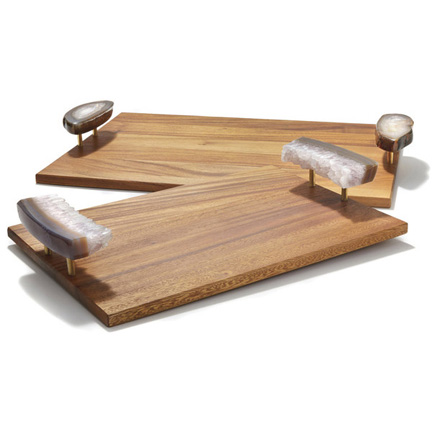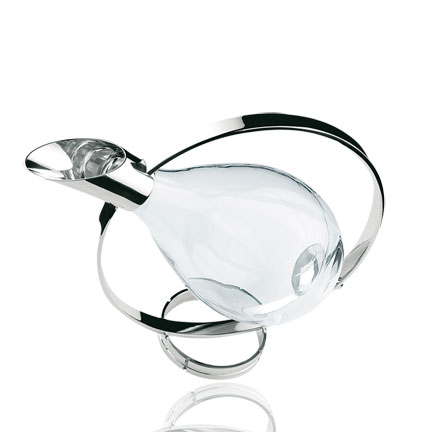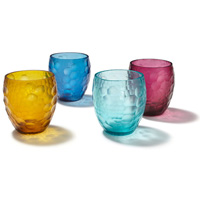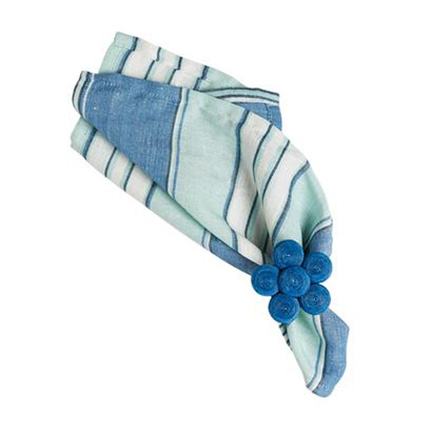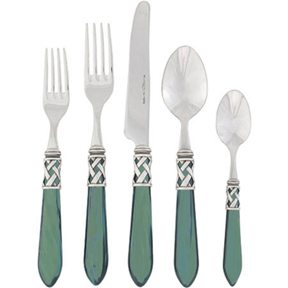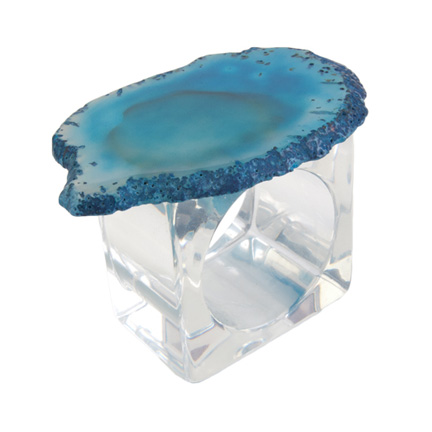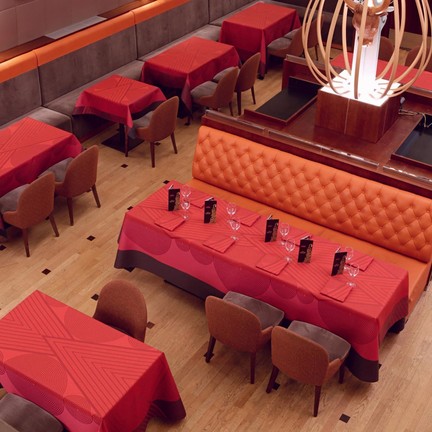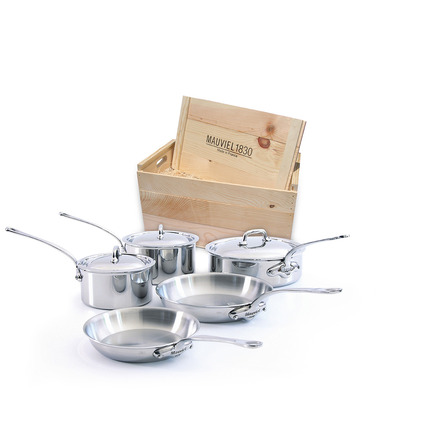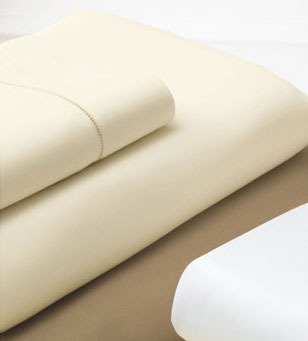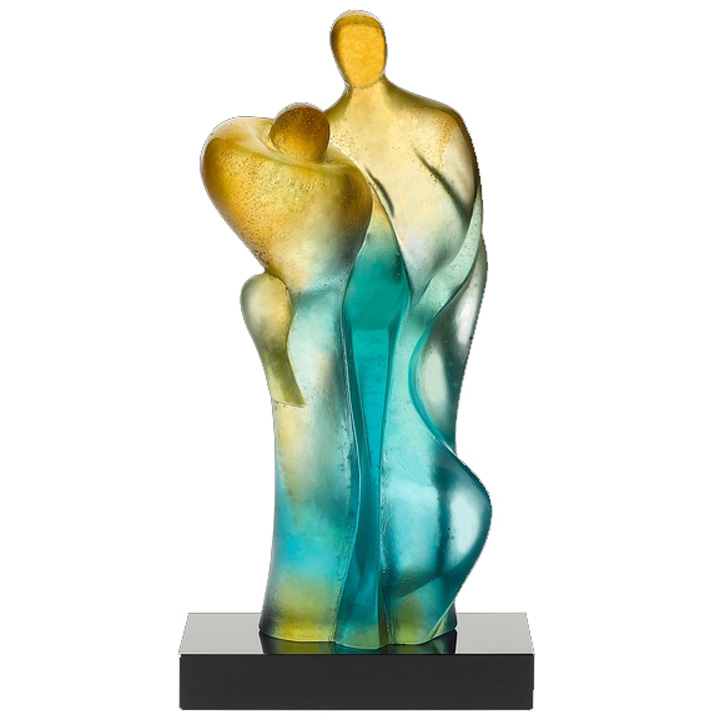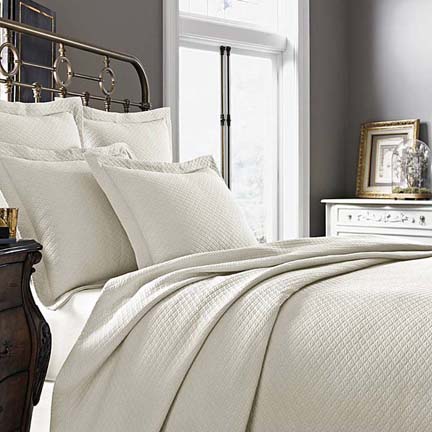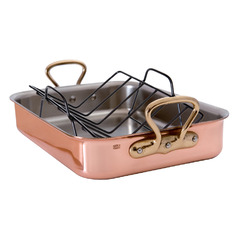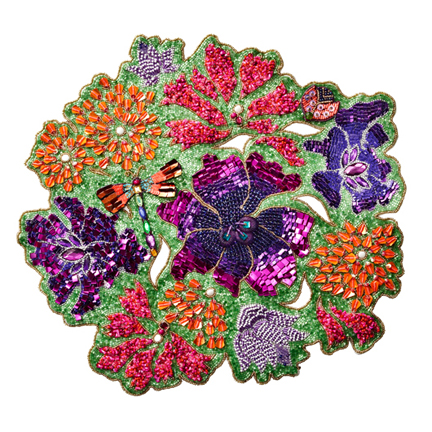Save to...
Wally’s Vinoteca: The Hottest New Wine Bar in Los Angeles
The new house we are building will have a wine room in the basement, so I’ve spent a good amount of time looking at pictures of wine rooms online. Many of them are very old school, the kinds of rooms you would find if you were living in a castle in France. But since we’re in L.A., I wanted something a little hipper (and friendlier). I wanted a mix: a room with glass doors and wood elements so that it would be both inviting and timeless.
My architect mentioned that he’d worked with the owners of Wally’s, a well-loved wine store in west Los Angeles, several years ago to design their private wine room. So he put me in touch with their cellar expert, who shared that he’d recently finished working on Wally’s Vinoteca, a wine bar in Beverly Hills.
I went twice last week, and I was blown away.
Opened in December 2014, Wally’s Vinoteca was the brainchild of Christian Navarro, a kid from Palm Springs who twenty years ago started working with Wally’s founder Steve Wallace. Fast forward to 2013, when Guess? founders Maurice, Paul, and Armand Marciano bought into Wally’s and brought with them a whole different attitude: yes, deeper pockets, but also a sense that the city was ready for something more exciting. Christian, for his part, had always dreamed of a place that was more convivial – sort of like the Harrods Food Hall in London – where you could drink something, get a bite to eat, and linger.

The Marciano brothers let Christian run with his idea, and they’ve created a super exciting food destination in Beverly Hills. The vinoteca stocks 150 wines by the glass, but you can also order a bottle (from their 2,500+ bottle selection) and enjoy it on site. All the seating in the restaurant is communal, and – this I love – it’s available at different heights. So if you feel like lingering at a regular table, you can, but if you prefer to swing from a bar chair and face the room, you can do that too.
As you’d expect, the place is serious about wine, with floor-to-ceiling, handcrafted solid wood shelves.
But it’s also very inviting. The lighting is terrific (love the Edison lightbulbs) and they’ve used lots of natural materials: four-inch Carrara marble counters, reclaimed lumber ceilings, and distressed seating.
The food – a mix of cheeses, charcuterie, and small plates, is served in white bowls or olivewood boards. All very simple.
Halfway through the vinoteca is their cheese counter. They also stock breads, chocolates, and jams.
Behind it, there is a game mosaic inspired by the one at Harrods.
And to top it off, we got a private tour of their back room, which included wines from 1901!
Finally, I’ve found a wine room that I can understand: one that does what you need it to do (store wine), but also gets that it’s ultimately about creating a place where you can enjoy yourself and have a good time with friends.
So glad Wally’s is in our neighborhood … you should visit next time you’re in town!
Note: All images courtesy Wally’s Vinoteca.
Like the look? Here are a few ideas to get you started:
How to Choose the Right Rug for Every Room in your House
When choosing a rug, always start by thinking about you’ll be doing in the room. Typically, it comes down to three functions:
1) Entryways, bathrooms, kitchens, laundry rooms and mud rooms: easy to clean rugs
2) Family rooms, offices, closets: casual and lightweight rugs
3) Living rooms, bedrooms: thick and plush rugs
After you’ve narrowed it down to which kind of rug you need, here are a few things to consider:
Entryways/Foyers
– In the entryway, choose a rug that hides dirt well and is large enough to cover the width of your door.
– Measure your door clearance so that the rug is not so thick that it gets in the way when you open and close your door.
– In the foyer, rugs can be used to anchor a console table, direct your sight lines forward, or add color. For best effect, leave at least 6-12″ of bare wood exposed on all sides.

Living Rooms
– The best rugs visually anchor seating groups, so choose one that is large enough to fit all four legs of your furniture pieces. If necessary, the rear legs of your sofa can be left off-rug.
– If you want to leave some of your floors exposed, choose a rug that leaves you with 18″ – 24″ of space between the rug and the wall.

– If your living room is very large, pick two or three rugs and lay them side by side. These can either be identical or complementary.
Dining Rooms
– To make sure that the rug is large enough to cover chairs when they are pulled, choose one that is at least 24″ larger than your dining table on all sides.


– In a multipurpose room, delineate the dining area with its own rug. However, if there’s already a large rug underneath, then you can leave the space bare.
Offices
– In offices, even smaller rugs will bring in a lot of style. They’re also great at making work seem more fun.
Take a look at this study room for kids …

… and at this space for adults. Don’t the rugs just finish up the rooms?

Stairs
– Stairs typically look best with solid or striped rugs.
– If you have heavy foot traffic, go with a darker color; otherwise, a fun rug can really brighten up the space.
– For an easy solution, start with runners (see our instructions for installing a stair runner here).

Bedrooms
– Choose an area rug that is at least 24″ larger than your bed on all sides. This way, you’ll be able to step onto something soft when you wake up.

– If you use nightstands, be sure the rug ends at least 6-12 inches beyond the edges.
– If you want to leave some of your floors exposed, choose a rug that leaves you with 18″ – 24″ of space between the rug and the wall.
– If you have a sitting area, you can use one smaller rug between two chairs or in front of a sofa or chaise lounge.
– Here are some easy guidelines for choosing an area rug for your bedroom:





Bathrooms
– Bath rugs are essential for stepping out of the tub or shower. Pick one that’s washable and large enough to cover the size of your glass door.
– If you have double sinks, matching bath rugs add softness and symmetry to the room.
– Area rugs are perfect for covering up older tile or hardwood. It’s also great for walking around barefoot.
Closets
– Bold area rugs look fabulous in closets.

Laundry Rooms/Mud rooms/Back doors/Outdoors
– Indoor/outdoor area rugs are perfect for these high-traffic, moist environments. You can use them to add color and texture to each area, and they are easily cleaned.

– Outdoors, rugs are perfect for delineating specific areas, like this dining space:

– We also love using rugs to guide guests toward special areas in the garden:

To view all our rugs, click here.
An Oasis in the Sky: Roy Choi’s Commissary Restaurant in Koreatown (Los Angeles)
When I think of Koreatown in L.A., I am instantly reminded of the sweet, savory, smoky flavors of the all-you-can-eat, grill-it-yourself, belly-busting Korean barbecues. But when our office decided to spice up our weekly meeting with lunch at Roy Choi’s (of Kogi truck fame) Commissary restaurant, we were in for a huge surprise.
Commissary is located at the edgy and unusual The Line Hotel, which from the outside, looks super colorful because of the extra-bright curtains used in each room.

In the lobby – which is meant to mimic a large living room – you’re greeted by a series of round banquettes with a coffee shop at one end and a bar at the other. So you’re covered from morning to night.


But the star of the hotel is located on the second floor, right next to the pool: Commissary, a restaurant designed to look like a greenhouse. Nestled in the crevices of the surrounding skyscrapers, it was breathtaking.

In the bar (which was partitioned using old crates), there was a miniature truck like the one Jon Favreau drove in the movie Chef (whose main character was inspired by Roy Choi). Flooded with sunlight, this magical haven was the opposite of the clamoring, crowded KBBQ hot spots on the street below.
On each table, there was a stack of mismatched napkins and dime-store glasses. We sat down to snoop through some mail, which actually contained our menus …
We ordered a burger, a French dip sandwich, the shrimp po’ boy, fries, roasted carrots, green tea, and root beer for old times’ sake.
Naturally, none of the plates matched. Easier that way, plus it made the table much more fun.
The food was good. Smothered in gooey cheddar cheese (a twist on the classic), and piled high with lean cuts of roast beef, each jus-drenched bite of the French dip oozed with warm, flavorful broth. The po’ boy was everything this southern staple should be: a zingy-spicy delight, a buttery, crispy creation, and a complete mess.
And the burger was excellent. The patty was a juicy mix of 80% beef/20% pork; combined with homemade tomato marmalade and zesty horseradish mustard, this was a home run. We were sorry to leave, but we had to head back downstairs to check out “LA Weekly’s Best Cookie:” the POT cafe’s famous mocha chocolate chip cookies. Filled with chunks of espresso dark chocolate and topped with flecks of sea salt, these cookies were unforgettable.

We highly recommend Commissary next time you’re in Koreatown. And trust us when we tell you: it’s OK to eat with mismatched napkins and plates. It’ll make you feel like a kid all over again.
Like this look? Check out some of our newest arrivals at Gracious Style:
Inside the Offices of Billion Dollar Startups
So much attention is given to valuations of hot companies that it’s sometimes hard to remember that just a few years ago, all of these were just a fragment of someone’s imagination. So we thought it would be fun to check in on them and see: what do you do when you’ve outgrown your digs and need to get yourself some real offices? And what do the best modern offices share in common? Here’s what we found out.
They definitely don’t look the way they did in the 50’s …

… or even what they looked like in the 90’s:

Today’s offices are much more open, with space for both focused work and collaborative areas. They feel like playrooms, and they’re filled with all the best comforts from home, like sofas, rugs, pillows, and fully outfitted kitchens.
Designed by Studios Architecture and housed in the New York’s Empire State Building, Shutterstock’s loft-like offices include plenty of comfortable seating and small breakout rooms.

If Airbnb’s San Francisco headquarters feel like home, it’s because it include replicas of popular listings in Bali, Rykjavik, and Paris.

Although very high-tech, Uber’s San Francisco offices feature lots of natural materials, soft rugs, and comfortable communal seating.

Jessica Alba’s The Honest Company is a powerhouse manufacturer of non-toxic products, but their headquarters are anything but industrial. They are full of natural light, playfulness (notice the wall of positive mantras in the background), and ready for any babies who visit.

Hulu’s architects, Gensler, spent months researching how the Hulu team works, and they concluded that the average team member spends their day doing 50% focused work, 35% collaboration, 6% play, 5% learning. So for the company’s Santa Monica headquarters, they designed an open space that allows for lots of collaboration (previously known as playing videogames).

Finally, we have Tory Burch’s offices in Manhattan. Like her stores and her homes, designer Daniel Romualdez has created a superchic set of rooms oozing with Tory’s style and reminiscent of home.

Our takeaway from all these offices? They no longer look like work!
So whether you work alone or in a huge company, just focus on making your office is as inviting and comfortable as you can. Start by asking yourself the following questions:
– Does it inspire me? If you’re working on designing a collection of jewelry, could you display pictures of gorgeous movie stars to get the conversation started?
– How can I make the space more personal? If you love flowers or just feel happier when you see pictures of your last vacation, bring them in.
– Is my chair comfortable? Could I make it better with a throw or a pillow? Would I like it better if it were turquoise like Tory’s?
– Is my desk organized? Could I use a pencil cup, or a tray?
– Could I add a lightly scented candle?
– Do I have separate zones for focused work and meetings with colleagues?
– Do I have comfortable seating for guests who visit?
– Can I easily tilt my computer screen to share something I found online?
– Could I bring the outdoors in? Can I add plants or sit near a window with a view to the outside?
– Is the lighting right? If it’s too harsh, can I install dimmers? If it’s too soft, can I bring in a favorite lamp?
– Does it feel inviting? Does it have my favorite colors? Could I add a rug underfoot so it’s plush when I work?
A successful office is one that is seamless, so you never feel like you’re “at work;” you’re simply working on a project that you love. So shouldn’t it be the best you can make it?
Thursday Sale: Quick-Ship Gifts for Mom
Still stumped on what to give Mom for Mother’s Day? There’s still time to get some of our best gifts, and best prices, before May 10!
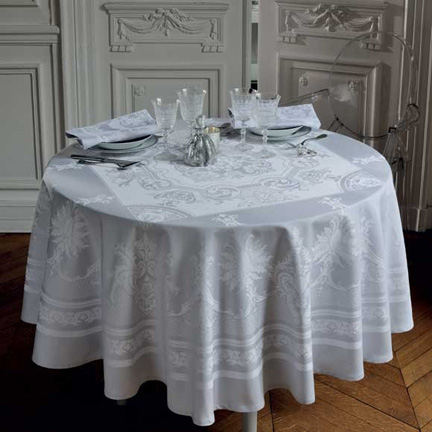
To view our full sale section, click here!
Rebranding Our 16-Year-Old Startup
1999. The NASDAQ set new highs. Nokia introduced a cell phone with games and picture texting. AOL’s free CD’s made the Internet the hottest thing.
In Manhattan, a young couple had just gotten engaged, bought their first house, and quit their jobs in finance to start a business together. They didn’t know much about business, but they loved going to Europe and the gracious, Old World style of entertaining they experienced there. They thought maybe other people would like it too, so they called their little company “Gracious Style.”
It was slow going for a while. Luxury brands back then believed they should be exclusive. You were either born into the Upper East Side and shopped at the right places, or they didn’t want you as their customer. But gradually, we convinced them, one by one, that the internet wasn’t a bad thing and wasn’t going away, and we had a unique way of showcasing them online to a wider audience. Along the way, we also learned a lot more about design, through our travels, through working with some of the top talents in the industry, and through renovating and building about a dozen houses ourselves.
Sixteen years and two major recessions later, after many bigger and flashier companies have come and gone, we’ve grown quietly and steadily. Today Gracious Style works with just about all the major luxury brands in home entertaining. We’re also older now, and increasingly we’re helping the next generation start their life of entertaining together.
A big issue we face is how that older, gracious style of entertaining we love fits in. Where do 200-year-old china patterns used by the royal families of Europe fit with today’s hyper-connected, social, mobile, texting Millenials? Should they be relegated to display cabinets and brought out once a year? Or should we just put them in museums and be done with it?
We don’t think so.
In fact, we believe that gracious entertaining is even more important now than when we started. More than ever, we need to hit pause and live in the moment. We need permanence and history in a world that changes too fast. We need to savor our foods, talk with our loved ones, and nestle in our beds. What we do is not just for private jets, yachts, and second-/third-/fourth homes. It is also for the young couple sharing a loft downtown. It’s for the executive whose daily quiet moment is her morning cup of chamomile. It’s for the architect who celebrates his kimchi tacos with all the fanfare of The French Laundry.
We’re not the only ones who believe this. We’re inspired by — and validated by — the restaurants that are making honest, locally grown food, by resorts like Blackberry Farm and the Aman that take us back to nature, and by the thousands of creative young people who are taking back the old inner cities of Los Angeles, Brooklyn, and even Detroit. Even though we work with the some of the oldest luxury brands in the world, we feel a kinship with those young, creative people, and we want to make what we do meaningful to them.
So, today we started a partnership with a couple of these young, creative people. Meet Josh and Aaron of The VHF:

They work out of an old Coke bottling warehouse in Venice, where they churn out amazing work for swimwear manufacturers, game companies, and musicians (hey, this is LA):

And what we’ve asked them to do is help us make gracious entertaining relevant to a whole new generation:

Looks like they’ve got their work cut out for them. Stay tuned!
Friday Sale: New Items Added + Free Shipping
Lots of great new things on sale! And for a limited time, enjoy free shipping on all orders over $75.
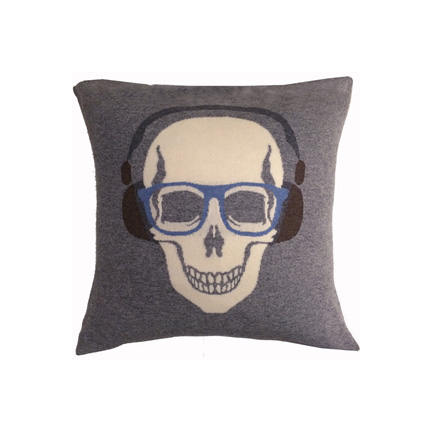
To view our full sale section, click here!
From the Experts: Design Ideas from Bon Appetit’s New Test Kitchen
Although most of my recipe gathering happens online these days, there’s no doubt that kitchen design is something that’s best left for the experts: they are the ones who are cooking heavily day in and day out, so they know how to put a good kitchen together. So when I heard that Bon Appetit had completed its move to 1 World Trade Center in New York, I was dying to look at their new test kitchen. It is gorgeous!
Designed by Gensler, this kitchen is 2,126 sq ft and features four islands, eight Wolf gas ranges, four Elkay faucets, two Traulsen refrigerators, two Traulsen freezers, and an Imperial Brown walk-in for fresh food. And for drinks, there’s a Kold-Draft icemaker that can produce beautiful 1- and 1 ¼-inch cubes.

On one side of the test kitchen, there’s a 515-foot tasting room. At 3 pm each day, senior staff members meet here to test dishes at the walnut dining table. Note how modern and organic everything feels.
Table settings are kept simple with white dinnerware, modern flatware, and low-maintenance succulent arrangements.

The built-in bar is at one end of the kitchen; perfectly tucked in between rows of glasses, cocktail equipment, and recipe books. Here, all the cabinets have solid doors to keep the look clean and minimalist.

Open walnut shelves are a great way to keep frequently-used pieces handy, and they add interest to empty walls.
Waterfall Calacatta marble countertops, mixed with natural wood accents and steel stools, are a clean counterpoint to the dark graphite cabinets.

Plenty of natural light; perfect for testing and photographing food. Notice the glass pendants; imagine these little sculptures all light up at night.

Do you like this kitchen? Create this look at home with the handcrafted collections from Jars, Juliska, Simon Pearce, Mauviel, and Michael Aram. And of course, from the chef who is an inspiration to so many, Thomas Keller’s Hommage and Checks dinnerware lines.
Understanding Area Rugs: Materials and Construction
To be able to choose the right rug, it helps to be familiar with the different kinds of materials and weaves. Here we break it down for you.
The most common materials for rugs are wool, cotton, acrylic, nylon, polypropylene, and hemp. There’s also silk and cashmere, but those are rare.
Wool is the finest and priciest. It keeps its shape and resists dirt better than any other fiber, so it holds up better under traffic and is more easily cleaned once soiled.
Cotton is a good choice because it is natural and lightweight (great if you move furniture often).
Acrylic fibers resemble wool, but they don’t hold their shape as well over the long run. They are less expensive than wool and they are a great alternative for those who are allergic to wool.
Nylon is one of the most popular, well-priced fibers used for carpeting today. It wears well and holds up under lots of traffic.
Polypropylyne (olefin) and Polyethylene (PET) are stain and water resistant, so they’re frequently used to make outdoor area rugs.
Sisal, sea grass, coir, and jute all come from the fiber of the hemp plant. They’re beloved by designers because they’re neutral and add texture without competing with anything else in the room. If you choose one of these, clean up spills as soon as they happen.
Now that you’ve chosen your material, let’s turn over to our friends at Dash & Albert to give us a primer on the different weaves available.
Woven cotton rugs are durable enough to stand up to the heavy traffic of a kitchen or hallway, but also soft enough for the bedroom, nursery, or family room. They are reversible, affordable and lightweight, so they’re great if you like to rearrange furniture often.
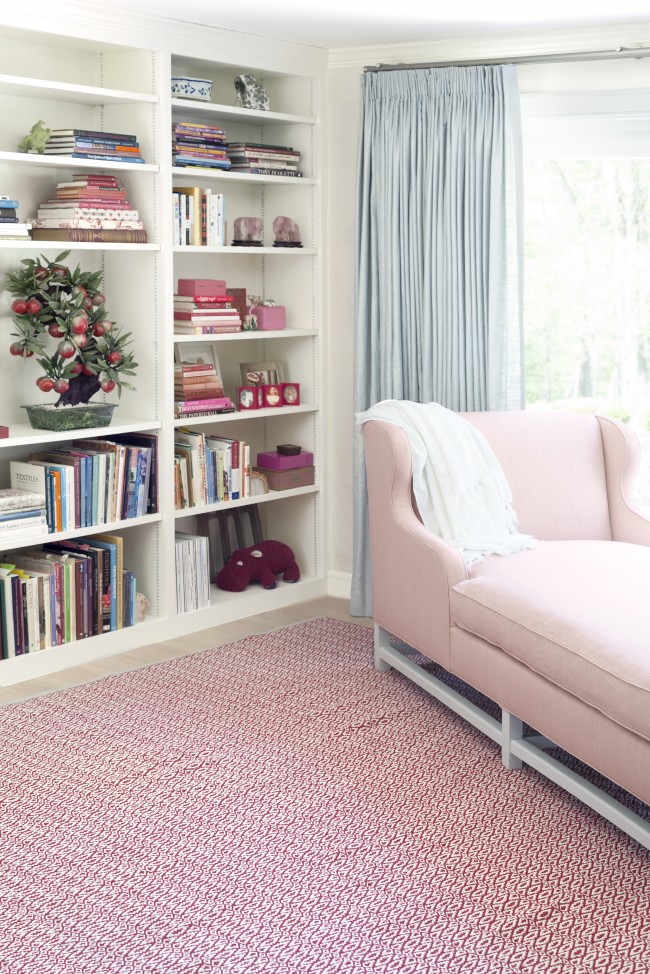
Woven chenille rugs are made from a combination of cotton and cotton chenille for plushness and softness. Like woven cotton rugs, they’re lightweight and reversible. Woven chenille rugs are great for low- to medium-traffic areas where you want a little more cushion underfoot, such as guest rooms, hallways, and home offices.
Hooked cotton rugs are hand hooked by skilled artisans from scrap jersey fabric or yarn, giving them a springy, looped construction that feels bouncy underfoot.
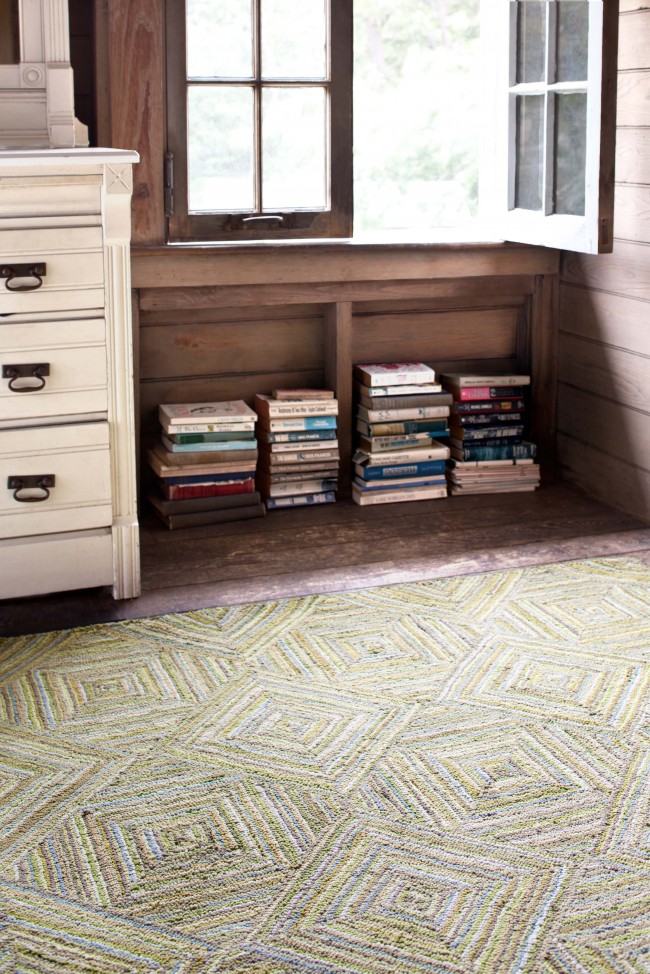
With hooked cotton rugs, the size of the hook and fabric loops is important in determining where to place your rug. Chindi large and medium hooked rugs are high-profile and very plush, so they’re well-suited for living rooms, bedrooms, and family spaces. If you’re looking for that same cushy feel with a lower profile and a more detailed pattern, go with chindi micro-hooked and yarn hooked rugs. These are great in offices, dining rooms, and even stairs!
Woven Wool Rugs
With a rougher hand and a dense, durable construction, woven wool rugs have a natural earthen charm and rustic texture. Woven by hand from 100 percent wool yarns, these rugs work best in low-traffic areas like guest rooms, home offices, and sitting areas. They are lightweight and reversible.
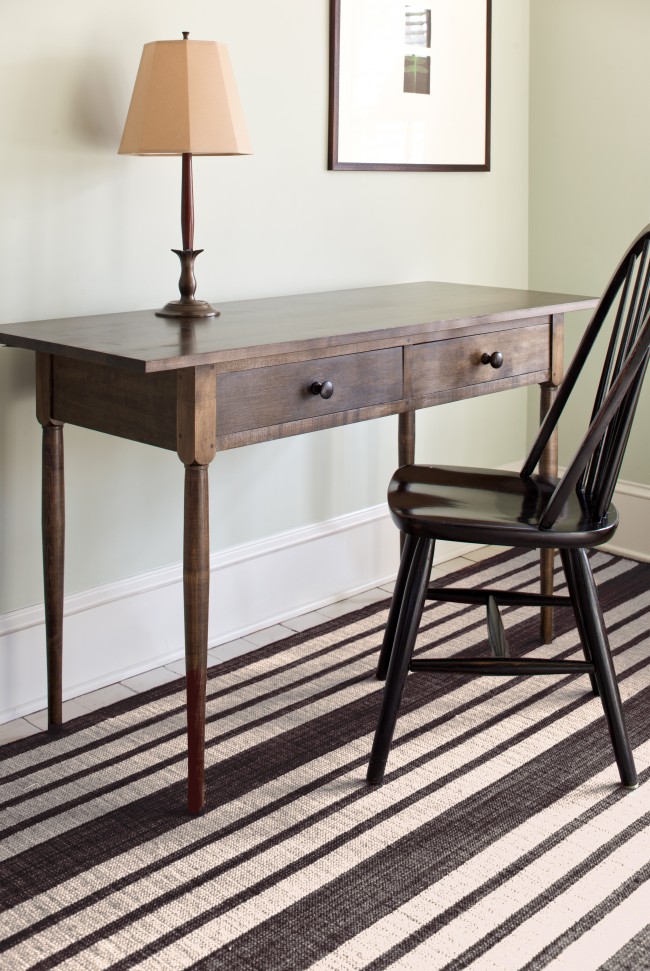
Soumak Woven Wool Rugs
Sophisticated and unusual, soumak wool rugs are crafted by braiding the weft yarn around an additional warp, so they have a more textured surface than their wool woven counterparts, and feature a dynamic pattern with lots of visual movement. Soumak woven wool rugs are for indoor use only, and work well in living rooms, bedrooms, and home offices.
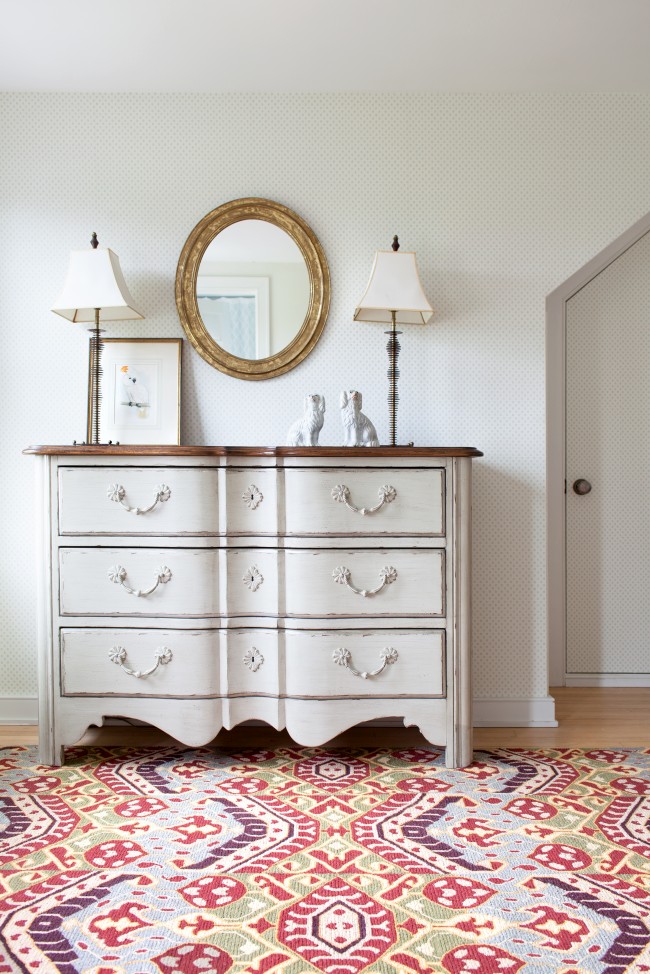
Hooked wool rugs require little maintenance and get better with age. The size of the hook and the yarns will help determine where to use your rug. Micro-hooked wool rugs are made with smaller wool yarns in tight hooks that create a low-profile rug, so they are perfect for high-traffic areas, including hallways, entryways, stairs, kitchens and mudrooms. Medium-hooked wool rugs, crafted from four to five plies of thick wool yarn in large hooks, feature a higher profile, making them ideal for bedrooms and living rooms.
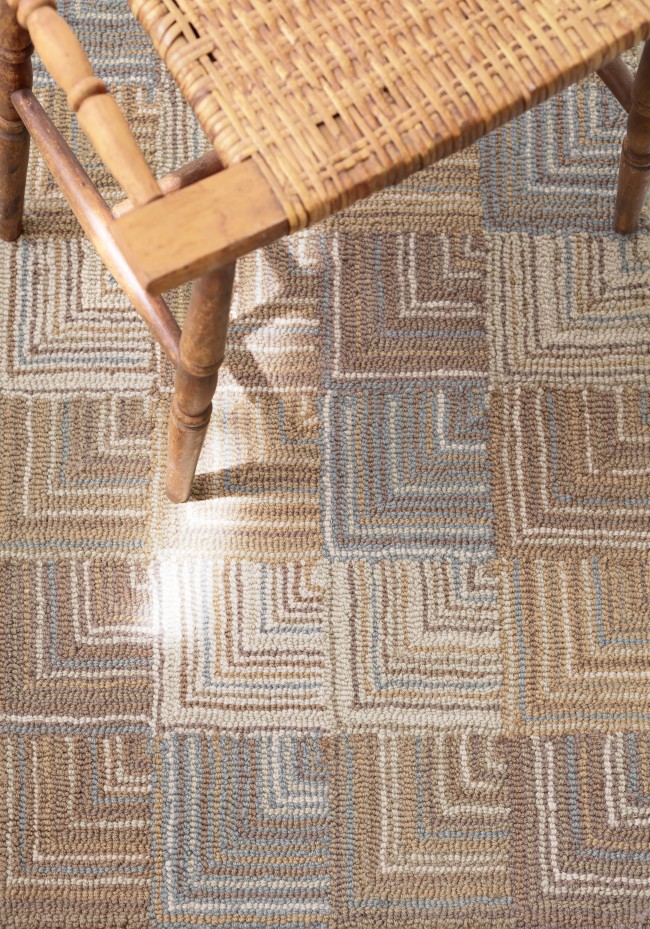
Tufted & Carved Wool Rugs
Full and lush, tufted and carved wool rugs are a true treat for the feet! Thick wool yarns are hand hooked in intricate designs, and then sheared to create a lush pile. The pile is then hand carved along the design, creating an area rug with a truly luxurious feel. The wool rug weave with the highest, cushiest profile, tufted and carved wool rugs are at home in living rooms, dining rooms, and master bedrooms.
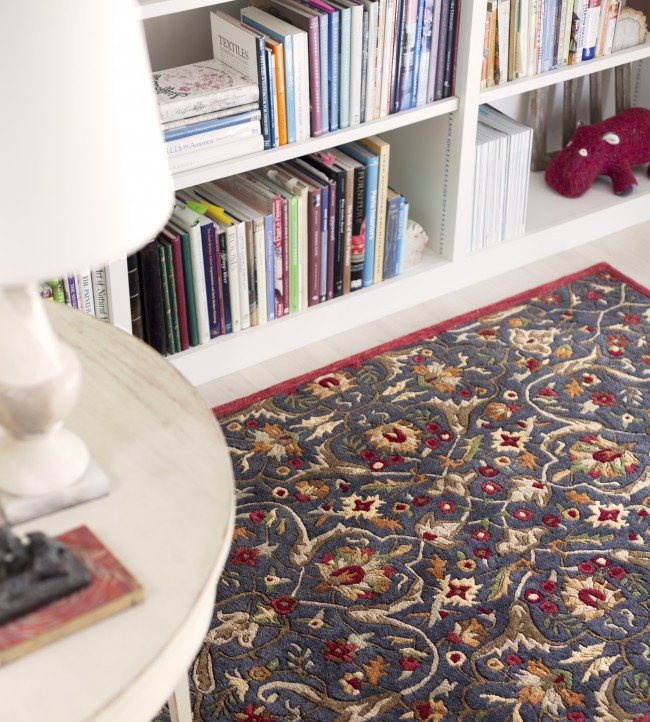
Hand-Knotted Wool Rugs
Crafted by only the most skilled artisans, hand-knotted wool rugs are timeless investment pieces. Because of their unusual weave, hand-knotted rugs can appear lighter from one angle than the other—an optical illusion that’s part of their appeal. Plush and sumptuous, these area rugs are perfect for rooms where the rug is the star: living rooms, bedrooms, nurseries, and playrooms.

Kilim woven wool rugs feature weft-created, geometric patterns; knotting creates an open weave that gives more definition and dimension to the pattern, while interweaving creates a softer pattern with intermingled colors. Durable, bold, and low-profile, these showstopping kilim rugs are natural for any room that could use some pattern, including bedrooms, dining rooms, and family spaces.
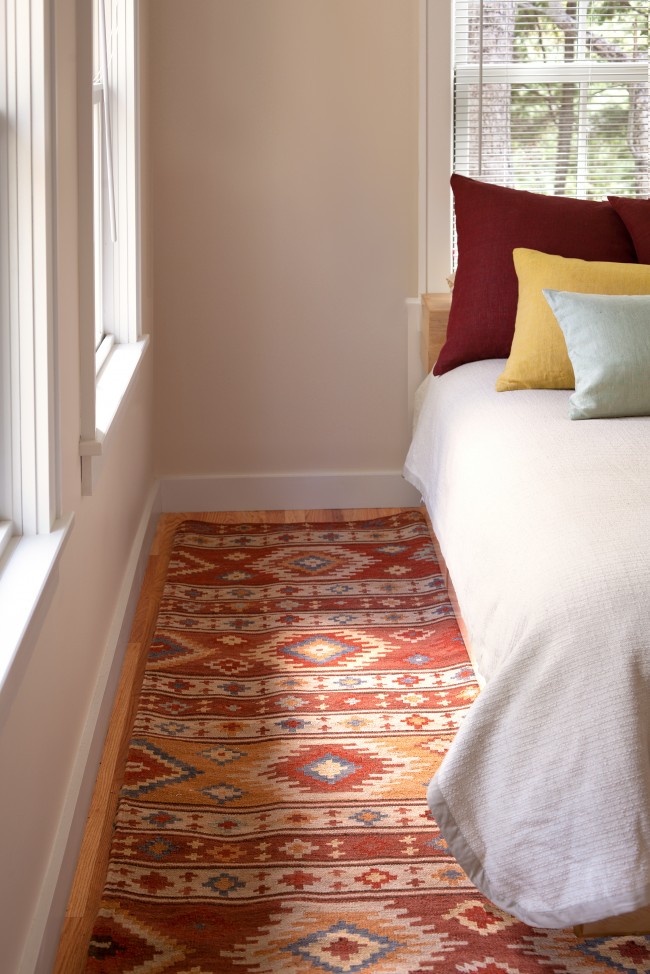
Woven Indoor/Outdoor Rugs
Made of nearly indestructible, UV-treated polypropylene, indoor/outdoor rugs are terrific for high-traffic areas: kids’ rooms, sunrooms, decks, and porches; and any floor that gets wet—like the bathroom, the kitchen, or the basement. And of course, indoor/outdoor rugs are ideal for homes with pets.
Small indoor/outdoor rugs are great for shoes, play mats, cargo-area covers in the car, and even food bowl mats for pets.
There are three types of woven indoor/outdoor rugs: flat weave, diamond, and dhurrie.
Classic flat weave indoor/outdoor rugs are hand-woven, with extruded poly yarns making up the warp and weft. The technique results in an array of patterns and happy stripes that make fun additions to frequent-cleanup areas like playrooms and crafting spaces.
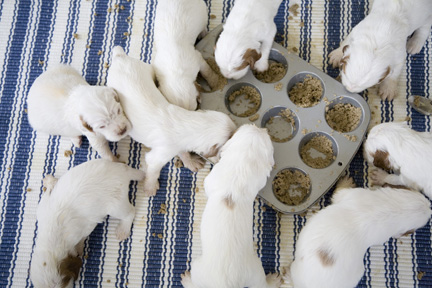
Diamond woven indoor/outdoor rugs are very similar to their flat-weave companions, except that they’re hand-woven on a jacquard loom, with the weft skipping specific warps to create their distinct diamond pattern. The eye-catching geometric is a star performer in areas where you want visual interest but still need durability, such as the entryway, the hallway, or the man cave. Bonus: geometric patterns can help camouflage everyday dirt, so if you haven’t quite gotten around to vacuuming, they’ll still look handsome for a few more days.
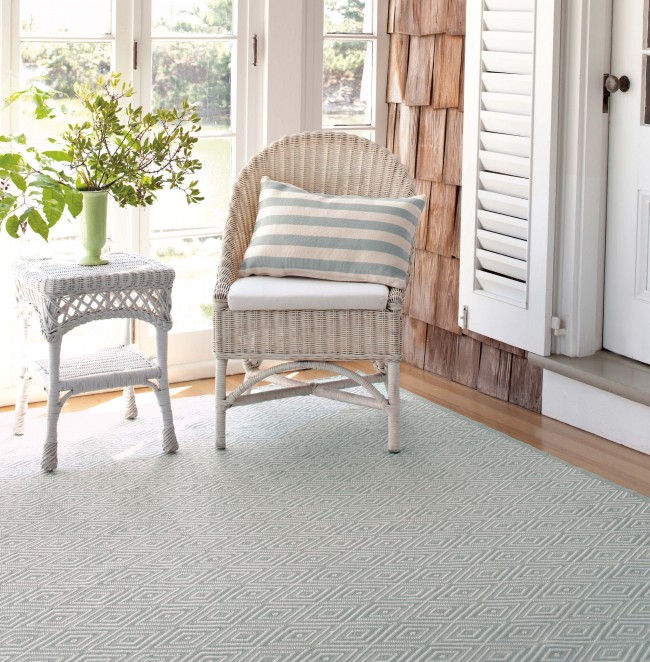
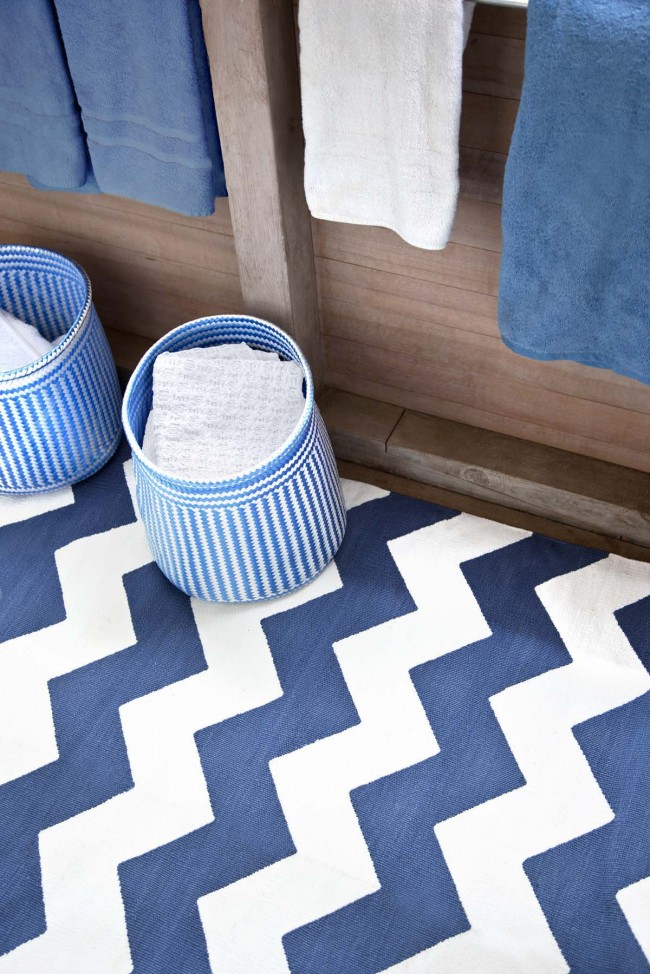
Woven Rope Indoor/Outdoor Rugs

PET (Polyethylene) Indoor/Outdoor Rugs
With their soft, pliable texture that is often mistaken for wool, PET indoor/outdoor rugs are just right for high-traffic areas that require a more sophisticated look. Made of recycled polyester, these area rugs are durable, washable, eco-friendly décor pieces that come in a variety of beautiful patterns and versatile hues. They’re lovely additions to the porch or patio (no need to worry about the sun, they’re UV-treated for fade resistance!), but also blend right in to more formal spaces like the living room, dining room, or bedroom.
Friday Sale: Mother’s Day Gift Ideas + Free Shipping
Mother’s Day is just one month away; be sure to remember her with these thoughtful gifts.
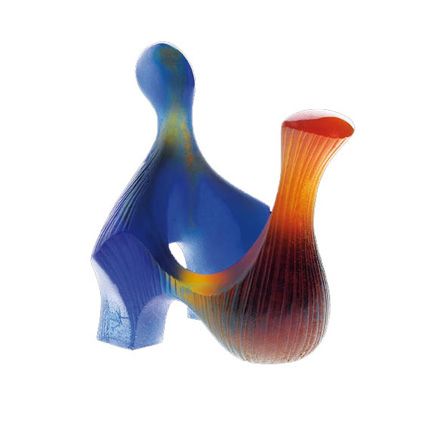
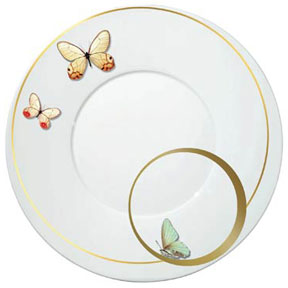
|
And for a limited time, enjoy free shipping on all orders over $75.
To view our full sale section, click here!






